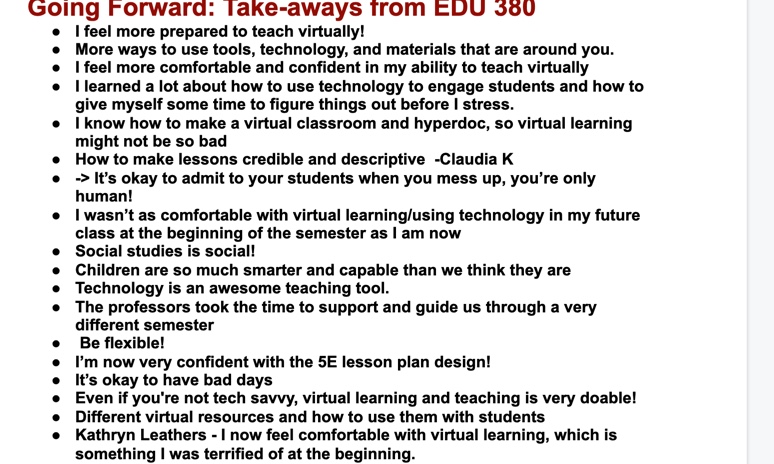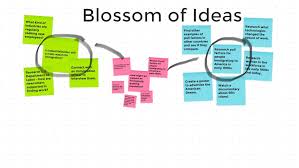Reflections About Teaching Science Remotely
By Jim McDonald
Posted on 2020-12-22

Disclaimer: The views expressed in this blog post are those of the author(s) and do not necessarily reflect the official position of the National Science Teaching Association (NSTA).
Teaching science, or any other subject, remotely or virtually is hard. However, you can do some things to make it easier and sustainable and be true to yourself. A sustainable course means considering things such as who you are as an instructor, what your strengths are, how to show yourself to your students, and what choices that you want to make for instruction. A sustainable course
• Varies by individual, context, and time. Ask yourself: What is the course I am going to teach? Who is my audience? What other science courses have they had? How much time do I have with the students?
• Plays to your strengths. Considering your strengths as an instructor is an important first step in determining how you will present the material to your students. Do you have a lot of experience you can share? Do you facilitate discussion well? Do you strive to promote student understanding? Do you have a lot of resources at your disposal to construct a plan for instruction?
• Demonstrates yourself. Who are you as a teacher? What do you like to listen to? How much do you want to take on at this time? What can you expect to reasonably change at this time? You may not want to make major changes due to the time factor. A better way to approach it might be to determine what you will do differently and adjust one or two things that are important.
• Allows you to choose intentionally. What is the most important thing that you want to try with your students? For me, it was to promote discussion and peer interaction. We all want to promote self-care for both ourselves and our students. I would begin each class with something I call Good Vibes: What is one thing happening in your life right now? My students and I would share this so that we could all get centered in our current situation.
We are all new to this genre of teaching remotely. Even those few teachers who have been teaching online for years were not doing so in a context quite as “flexible” as the current situation is in many schools. So I propose that we all further investigate this new genre. In that spirit, I present some things I’ve learned so far.

1. “Interactive” looks different. I have found the Google suite to be extremely helpful for interactive work in my virtual classroom. I use Google Docs, Slides, and Jamboard (see example at left) daily to discuss readings and do group activities. I typically set up a Google Doc before class with a table of questions for discussion (rows are pre-labeled with student names). I can see exactly who is participating in real time. (Note: I set up a shared Google Drive for our class. This allows me to create new Google Docs or Slides immediately during class if necessary and have them instantly accessible to all students in the class).
2. Community looks different. I make a conscious effort to speak directly to students attending virtually, as well as to those in the classroom. As I see them log in to Zoom, I greet them individually and chat with them. One of my in-person students mentioned how surprising it was to hear me apparently talking to no one before she realized I was speaking to a student on Zoom. She appreciated that the class is not split into “participators” in the classroom and “observers” on Zoom.
3. Group work looks different. I like to use Zoom breakout rooms, but the in-class component adds complexity. I’ve kept my pre-assigned breakout rooms, but I added a fifth breakout room just for in-class students. I manually re-assign this group each day based on who is in class. Those in the classroom can talk directly to one another, making the most of the in-class context.
4. My role with groups looks different. In the classroom, I like to move around and interact with each group. With remote teaching, this is more difficult. I’ve had to give up some control over the groups (I can’t “see” them in the breakout rooms), but I’ve found that the Google collaboration helps me monitor the work they are doing. If I assign each group a Google Slide in a shared slide deck, I can have the slides open on my laptop and can see at a glance which slides the students are looking at and what they are writing. I’ve also built in more time for each group to report on their efforts, and I use that time for the kinds of probing questions I would normally ask during the group work. The whole class benefits from our interactions in ways they probably missed during previous in-person semesters.
5. Connecting with students looks different. After my disappointing first week, I arranged to meet with each of my 25 students individually in 10-minute time slots on Zoom. It made a world of difference in my own attitude. Those short, one-on-one conversations helped restore some of what I was missing in my remote classroom: the opportunity to get to know students and connect with them. I realize not everyone can do this, but perhaps even in larger classes, faculty could meet with students in groups of five or six. For me, it was an important way to preserve one part of teaching I find most satisfying.
My most important lesson so far has been to recognize this as a genre problem. I don’t have to feel that all my teaching experience has betrayed me. I can change my mindset to become a student of this genre. I can look for what it makes possible. I need to be careful of assuming that what works in other teaching genres will work in the same way in this one and be prepared to make adjustments and even try new things. That makes it easier to return to the classroom (and log in to Zoom) each day.
 Jim McDonald is professor of science education at Central Michigan University (CMU) in Mount Pleasant, Michigan. He is the faculty advisor for the NSTA student chapter at CMU and teaches elementary science methods to preservice teachers. You can e-mail him at jim.mcdonald@cmich.edu or find him on Twitter @jimscienceguy.
Jim McDonald is professor of science education at Central Michigan University (CMU) in Mount Pleasant, Michigan. He is the faculty advisor for the NSTA student chapter at CMU and teaches elementary science methods to preservice teachers. You can e-mail him at jim.mcdonald@cmich.edu or find him on Twitter @jimscienceguy.
General Science Professional Learning old Teaching Strategies Middle School Elementary High School Postsecondary


